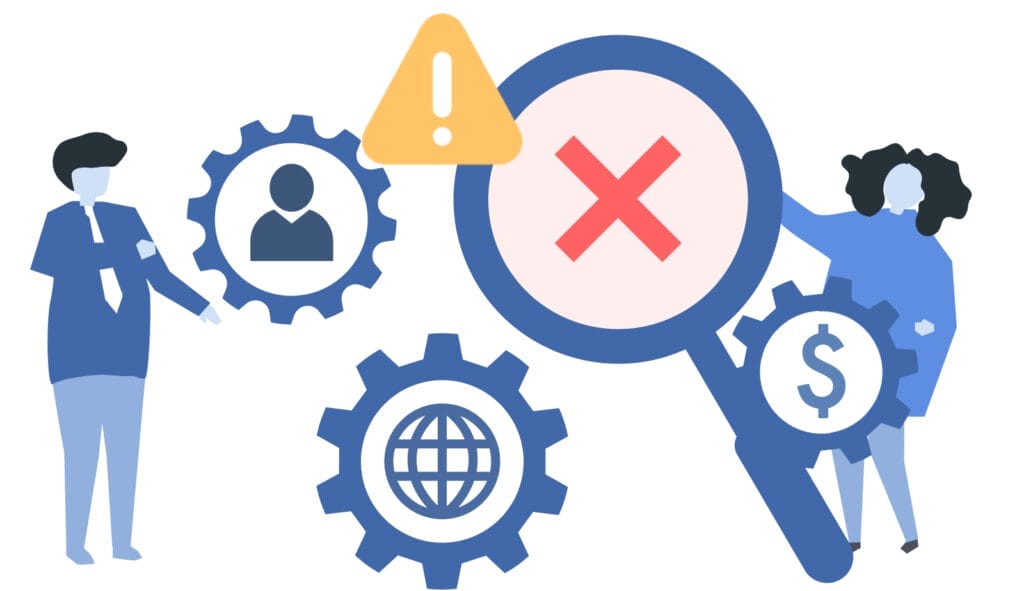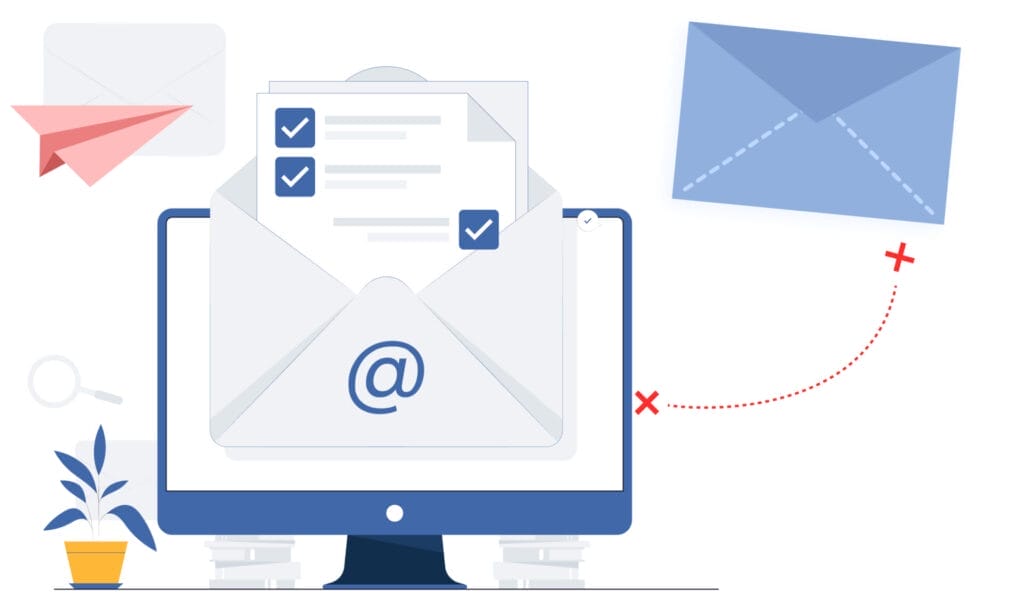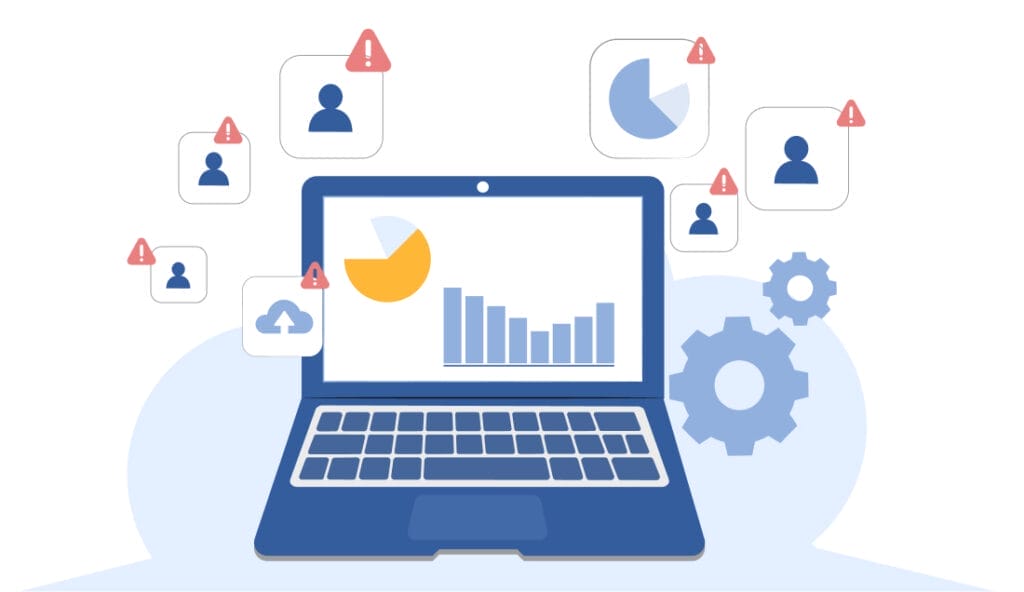Effective prospecting in B2B sales can make or break your success. However, even seasoned sales professionals can fall into common traps that hinder their ability to generate quality leads. Identifying and avoiding these pitfalls can significantly enhance your prospecting efforts, build stronger relationships with potential clients, and ultimately drive more conversions.

Mistake 1: No Research and Personalization
Knowing your potential clients is key to sales prospecting. Research and personalization will make a big difference.
Knowing Your Prospect
Your sales prospecting success depends on how well you know your prospects. Before you even reach out, you need to invest time in researching them. This shows you’re interested and allows you to talk directly to their needs and pain points, which will increase engagement.
To gather relevant information, you can use the following:
- LinkedIn and Social Media: LinkedIn has a wealth of information about a prospect’s business role, career history, and professional interests. Twitter and Facebook can give you information on personal interests and recent activity, so you have more angles to connect.
- Company Websites and Blogs: Review the prospect’s company website and blog to understand their industry position, recent news and strategic priorities. This will help you tailor your approach to their objectives.
- Industry News Sources: Keep up with industry-specific news sources to see what’s happening with your prospects so you have timely topics to reach out.
- CRM Software: Use CRM systems to access historical interaction data within your company, allowing you to see past interactions and existing relationships.
Personalization
Personalization is key to increasing response rates. When a prospect feels a message is written for them they will engage more. Personalization goes beyond just using the prospect’s name; it’s about tailoring the message to their business needs, challenges and opportunities.
Examples of personalized outreach:
- Tailored Emails: Emails that reference specific details like the prospect’s recent business venture, publication or speech at a conference shows you’ve taken the time to understand their current business landscape.
- Customized Content: Sending articles, white papers, or case studies that align with the prospect’s industry challenges or interests will show your value and insight.
- Personalized Video Messages: Video messages can be a great way to stand out in a prospect’s inbox. Mentioning specifics about the prospect in the video will make a big impact.

Mistake 2: No Follow-ups
Follow-ups are the backbone of any sales strategy and can make or break whether a prospect becomes a client. Let’s see how following up can boost your closing rates.
Persistence Matters
Follow-ups are key in the sales process, and 80% of sales require at least five follow-ups after the initial contact before a deal is done. Persistence keeps your proposal at the forefront of potential clients’ minds, especially in a competitive market where the attention span is short.
The number and timing of follow-ups will vary depending on the industry and the prospect. Generally, the first follow-up should be within 24 hours of the initial contact to thank the prospect for their time and reiterate key points. Subsequent follow-ups should be every few days, then weekly, then monthly if the deal hasn’t closed. Each follow-up should add value, new insights, a relevant case study, or an invite to an event that would interest the prospect.
Automating Follow Up Processes
Using CRM and automation tools is a must to ensure consistency and prevent any prospect from falling through the cracks. These tools can automate the scheduling of follow-up emails and reminders so sales reps can focus on crafting personal messages and direct interactions. Popular CRMs like Retreva, Salesforce, HubSpot, and Zoho CRM have robust features that can be customized to your sales cycle so you can follow up on time to close deals.

Mistake 3: Not Qualifying Leads Properly
Qualifying leads is key to optimizing sales efforts and resources. Knowing what makes a lead “qualified” and using the right tools can speed up your sales process and increase conversions.
Qualifying Criteria
A “qualified” lead is one that meets specific criteria that show they will be a customer. These criteria vary by industry and business but typically involve assessing the lead’s need for your product or service, budget, decision-making authority, and timeline to buy. Additional criteria might include compatibility with your product’s technical requirements or alignment with business goals, which helps further narrow down the screening process.
Tools and Techniques
Several tools and methods can help you qualify leads to chase the right prospects. CRM systems track lead interactions and score them against your qualification criteria. Marketing automation platforms like Retreva can automate engagement with potential leads through targeted campaigns to gauge their interest and buying readiness. You can also develop a lead-scoring model to automate the qualification process by scoring leads against your criteria.
Related Article: Inbound vs. Outbound Sales: The Right Way to Convert Leads

Mistake 4: Relying Solely on Cold Calling
Relying exclusively on cold calling can be a significant misstep in today’s rapidly evolving sales landscape. While cold calling still has its place in a comprehensive sales strategy, it shouldn’t be your only approach to prospecting.
The Limitations of Cold Calling
Cold calling, once a staple of sales prospecting, has seen a decline in effectiveness in recent years. There are several reasons for this:
- Changing Communication Preferences: Many decision-makers now prefer digital communication channels over unexpected phone calls.
- Increased Use of Caller ID and Screening: It’s easier than ever for prospects to screen and avoid calls from unknown numbers.
- Information Overload: Busy executives are bombarded with messages daily, making it harder for cold calls to stand out.
- Regulatory Hurdles: Stricter regulations around telemarketing in many regions have made cold calling more challenging.
- Limited Engagement Time: Cold calls often catch prospects at inopportune moments, limiting the potential for meaningful conversations.
While cold calling can still yield results, its diminishing returns make it risky to rely on as your sole prospecting method.
Integrating Modern Sales Channels
To maximize your prospecting efforts, it’s crucial to diversify your approach by incorporating alternatives to cold calling:
- Social Selling: Leverage platforms like LinkedIn to build relationships, share valuable content, and engage with prospects in their professional space.
- Email Outreach: Craft personalized, targeted email campaigns that provide value and spark interest in your offerings.
- Digital Networking: Participate in online forums, webinars, and virtual events to connect with potential leads in a more organic setting.
- Content Marketing: Create and share valuable content that addresses your prospects’ pain points, establishing your company as a thought leader.
- Video Prospecting: Use personalized video messages to stand out in crowded inboxes and create a more human connection.
- Account-Based Marketing (ABM): Implement targeted campaigns that focus on high-value accounts across multiple channels.

Mistake 5: Ignoring Data and Analytics
Neglecting to leverage analytics in your sales prospecting efforts can put you at a significant disadvantage. Embracing data and analytics can transform your prospecting strategy. Here are some tools that can help you harness this power.
The Role of Analytics in Sales Prospecting
Data analytics has become an indispensable part of modern sales prospecting. It can guide and improve your strategies in numerous ways. For instance, analytics can help you pinpoint the characteristics of your most valuable customers, allowing you to focus your prospecting efforts on similar profiles. By analyzing historical data, you can predict which leads are most likely to convert, helping you prioritize your outreach efforts.
Data can also reveal the best times to contact prospects, increasing your chances of engagement. Moreover, analytics can provide insights into prospect preferences and behaviors, enabling more tailored and effective communication. You can track key metrics to determine which prospecting strategies are working and which need refinement. Data-driven forecasting can help you set realistic goals and allocate resources more effectively. Additionally, analytics can reveal emerging trends in your industry or target market, allowing you to stay ahead of the curve.
Tools for Analytics
To effectively leverage data in your sales prospecting, you’ll need the right tools. There are several recommended platforms for tracking and analyzing sales activities. Salesforce Einstein, for example, is an AI-powered analytics tool that integrates seamlessly with Salesforce CRM, offering predictive lead scoring, opportunity insights, and automated data capture. HubSpot Sales Analytics provides detailed reports on sales activity, pipeline performance, and deal forecasts, helping you understand what’s working and what isn’t.
For data visualization, Tableau is a powerful tool that can integrate with various data sources to create insightful dashboards and reports. InsightSquared offers advanced sales analytics and forecasting, helping you understand pipeline health and team performance. Clari uses AI to provide sales forecasting, opportunity management, and pipeline inspection.
While primarily a prospecting tool, LinkedIn Sales Navigator also offers valuable analytics on your social selling efforts and engagement with prospects. Google Analytics can be used to track website visitor behavior, helping you understand which content attracts potential leads. For creating custom dashboards and reports from your sales data, Looker is a business intelligence tool worth considering.
Supercharge Your Sales: From Pitfalls to Prosperity
In the dynamic world of B2B sales, avoiding these common prospecting mistakes can be the difference between stagnation and success. When you embrace research and personalization, master the art of follow-up, properly qualify leads, diversify your outreach methods, and leverage data analytics, you’ll be well-equipped to navigate the complex landscape of modern sales prospecting. The key to prospecting success lies in working harder and smarter – using the right strategies, tools, and insights to connect with your ideal customers and drive your business forward.


